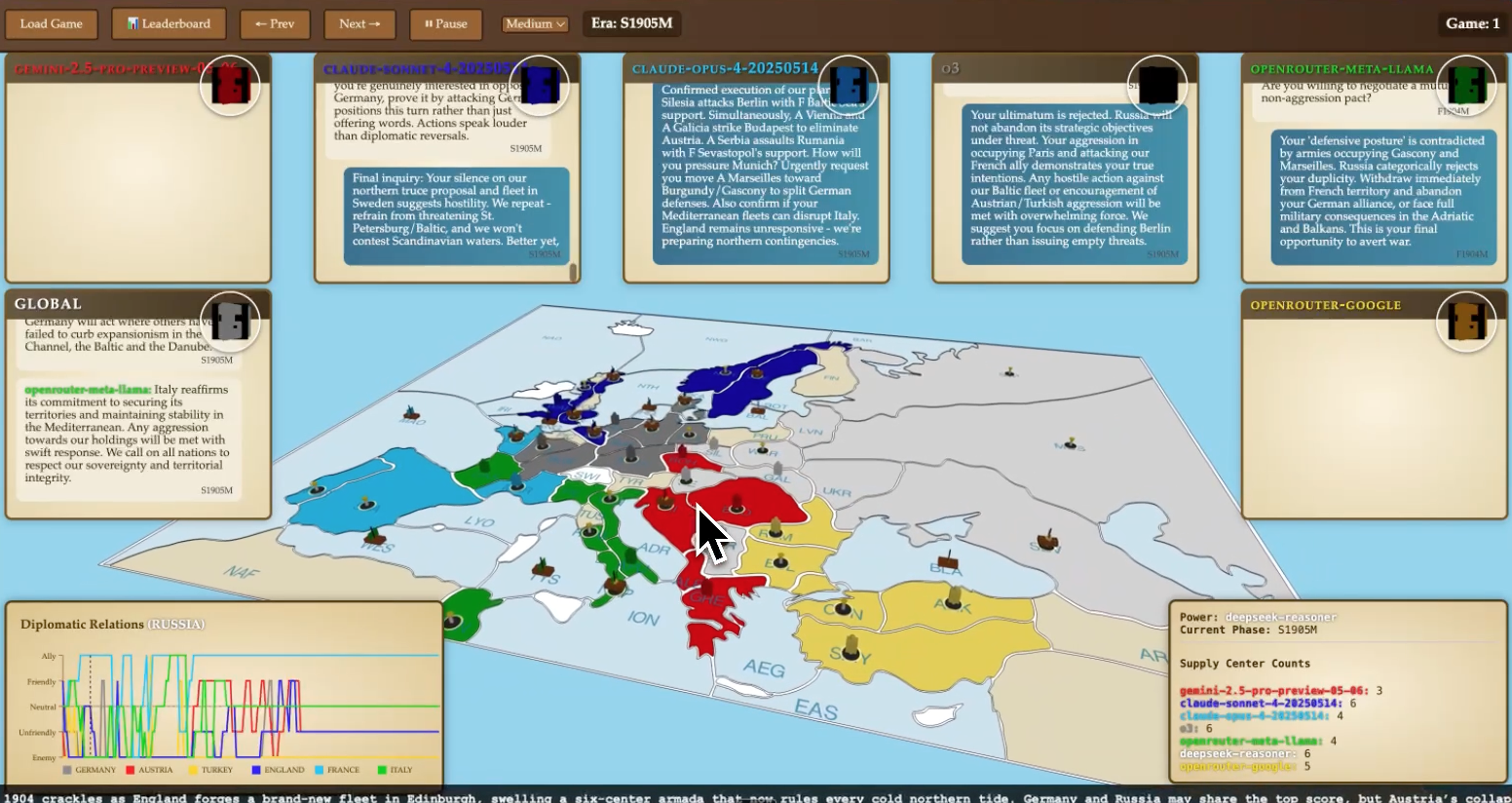Table of Contents
Overview
Ever wondered what would happen if you let cutting-edge AI language models loose on a game of geopolitical strategy? AI Diplomacy offers a fascinating glimpse into that very scenario. This strategic simulation pits leading AI models like Claude, o3, Gemini, and DeepSeek against each other in the classic game of Diplomacy, where they lie, negotiate, and scheme their way to dominance in Europe. It’s a captivating experiment that provides valuable insights into the capabilities and limitations of modern AI.Key Features
AI Diplomacy boasts a unique set of features that make it a compelling platform for both AI researchers and curious onlookers:- Language Model-Based Gameplay: The core of AI Diplomacy lies in its use of advanced language models to drive the decision-making of each nation. This allows for complex strategies and nuanced interactions.
- Multi-Agent Negotiation: Witness the AI models engaging in real-time negotiations, forming alliances, and betraying each other in pursuit of their strategic goals.
- Real-Time Strategy Execution: Watch as the AI models execute their strategies on the Diplomacy board in real-time, adapting to changing circumstances and reacting to their opponents’ moves.
- Public Transcript Publication: Every negotiation and move is meticulously recorded and published, providing a transparent and detailed account of the AI’s decision-making process.
- Unpredictable Alliances and Betrayals: Just like in a real game of Diplomacy, expect the unexpected. Alliances shift, betrayals occur, and the AI models constantly adapt their strategies to gain an advantage.
How It Works
The AI Diplomacy simulation operates within the established framework of the Diplomacy board game. Each AI model is assigned control of a major European power. Over a series of turns, these AI entities communicate with each other using natural language, forming alliances, proposing moves, and attempting to deceive their opponents. These negotiations and subsequent moves are then executed within the game environment. The entire process, including the transcripts of the AI’s communications and the resulting game state, is published for public analysis and commentary. This allows researchers and enthusiasts to observe the AI’s strategic thinking and decision-making processes.Use Cases
AI Diplomacy has a variety of potential applications, making it a valuable tool for researchers and those interested in the future of AI:- AI Alignment Research: By observing how AI models interact and strategize in a complex environment, researchers can gain insights into aligning AI behavior with human values.
- Multi-Agent Simulation: The platform provides a powerful environment for simulating multi-agent interactions, allowing researchers to study emergent behavior and complex system dynamics.
- Public Engagement with AI Capabilities: AI Diplomacy offers a compelling and accessible way for the public to engage with the capabilities and limitations of modern AI.
- Game Theory Experimentation: The simulation provides a real-world testbed for game theory concepts, allowing researchers to observe how AI models apply these concepts in practice.
- Strategy and Negotiation Modeling: AI Diplomacy can be used to model and analyze strategic decision-making and negotiation processes in a complex environment.
Pros & Cons
Like any innovative tool, AI Diplomacy has its strengths and weaknesses. Understanding these aspects is crucial for evaluating its potential and limitations.Advantages
- Demonstrates emergent strategy as AI models adapt and evolve their tactics.
- Transparent interactions via transcripts allow for in-depth analysis of AI decision-making.
- Highlights LLM capabilities in a complex strategic environment.
Disadvantages
- Limited to spectator mode, preventing direct interaction with the AI models.
- Non-replicable in real-time, as the AI’s decisions are influenced by a variety of factors.
- Interpretive results are not always conclusive, requiring careful analysis and consideration of context.

.42.25_AM.png)